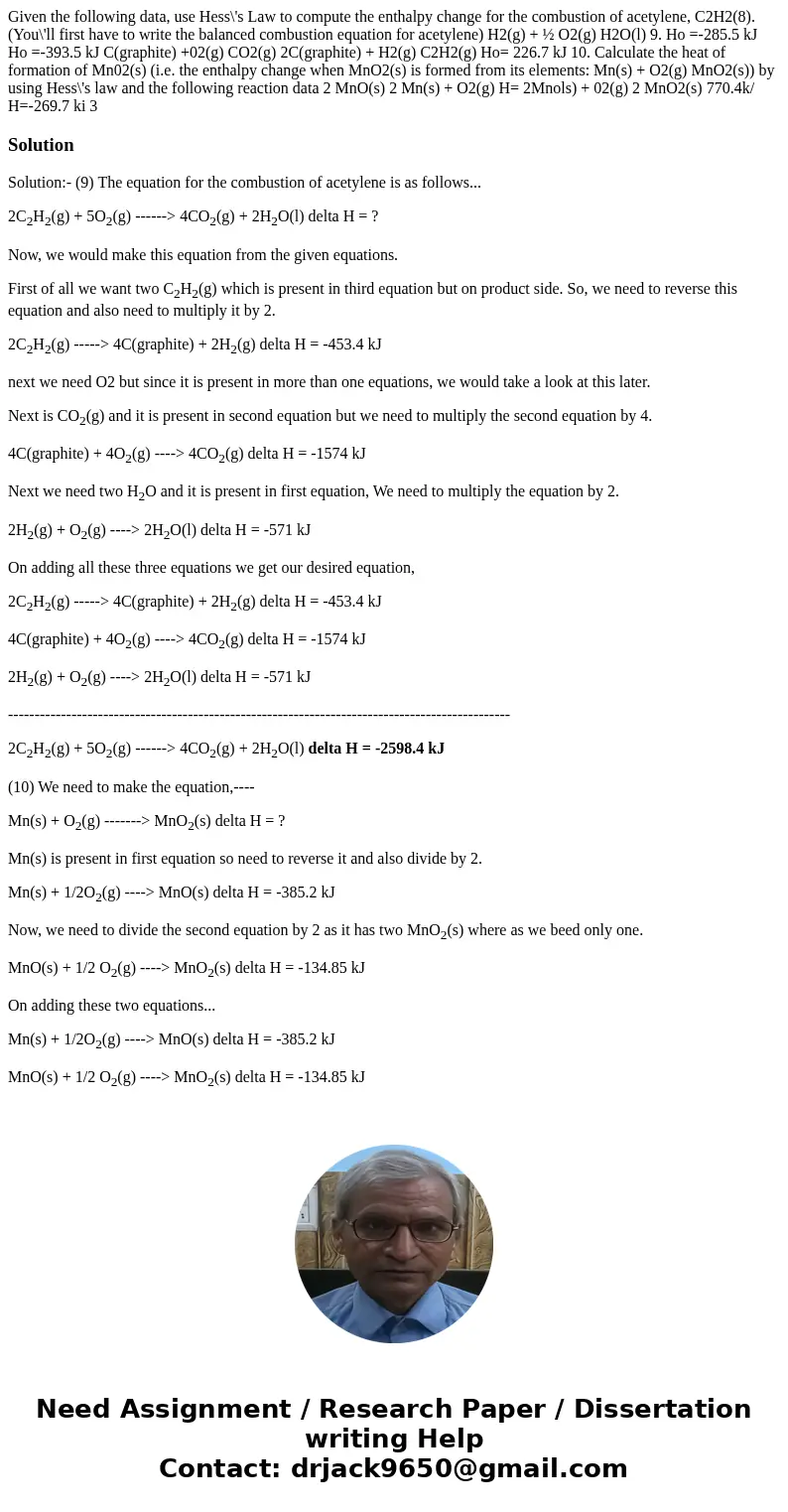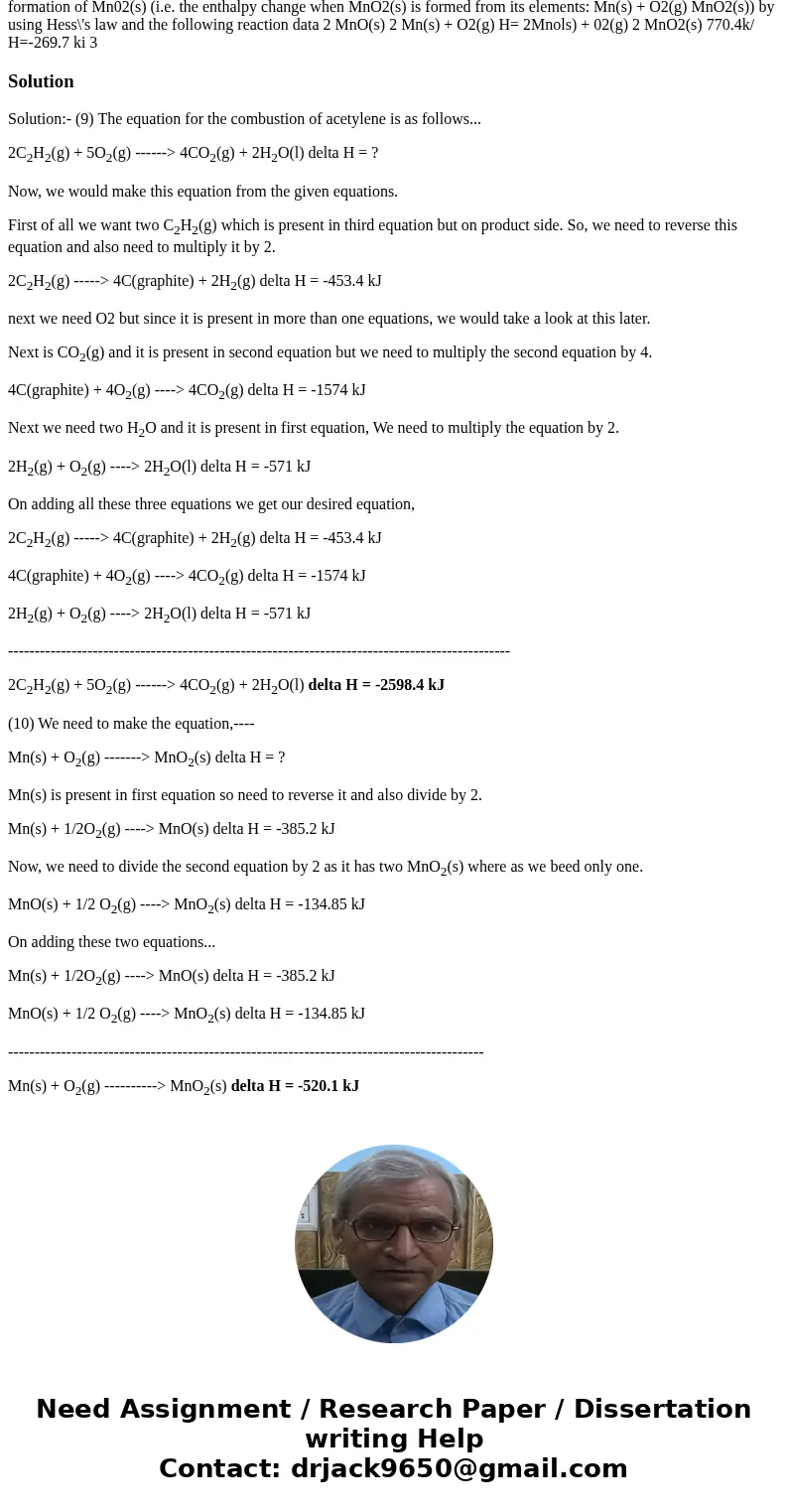Given the following data use Hesss Law to compute the enthal
Solution
Solution:- (9) The equation for the combustion of acetylene is as follows...
2C2H2(g) + 5O2(g) ------> 4CO2(g) + 2H2O(l) delta H = ?
Now, we would make this equation from the given equations.
First of all we want two C2H2(g) which is present in third equation but on product side. So, we need to reverse this equation and also need to multiply it by 2.
2C2H2(g) -----> 4C(graphite) + 2H2(g) delta H = -453.4 kJ
next we need O2 but since it is present in more than one equations, we would take a look at this later.
Next is CO2(g) and it is present in second equation but we need to multiply the second equation by 4.
4C(graphite) + 4O2(g) ----> 4CO2(g) delta H = -1574 kJ
Next we need two H2O and it is present in first equation, We need to multiply the equation by 2.
2H2(g) + O2(g) ----> 2H2O(l) delta H = -571 kJ
On adding all these three equations we get our desired equation,
2C2H2(g) -----> 4C(graphite) + 2H2(g) delta H = -453.4 kJ
4C(graphite) + 4O2(g) ----> 4CO2(g) delta H = -1574 kJ
2H2(g) + O2(g) ----> 2H2O(l) delta H = -571 kJ
-----------------------------------------------------------------------------------------------
2C2H2(g) + 5O2(g) ------> 4CO2(g) + 2H2O(l) delta H = -2598.4 kJ
(10) We need to make the equation,----
Mn(s) + O2(g) -------> MnO2(s) delta H = ?
Mn(s) is present in first equation so need to reverse it and also divide by 2.
Mn(s) + 1/2O2(g) ----> MnO(s) delta H = -385.2 kJ
Now, we need to divide the second equation by 2 as it has two MnO2(s) where as we beed only one.
MnO(s) + 1/2 O2(g) ----> MnO2(s) delta H = -134.85 kJ
On adding these two equations...
Mn(s) + 1/2O2(g) ----> MnO(s) delta H = -385.2 kJ
MnO(s) + 1/2 O2(g) ----> MnO2(s) delta H = -134.85 kJ
------------------------------------------------------------------------------------------
Mn(s) + O2(g) ----------> MnO2(s) delta H = -520.1 kJ


 Homework Sourse
Homework Sourse